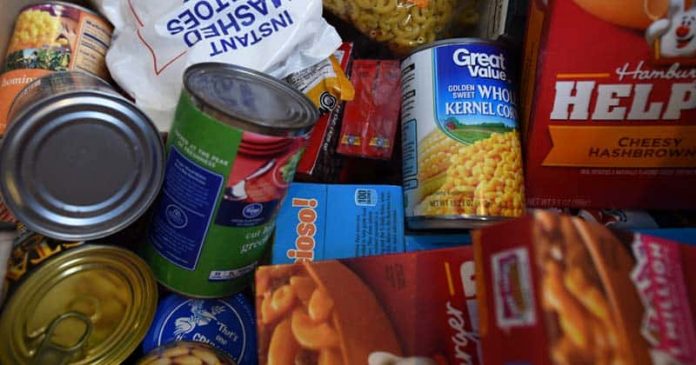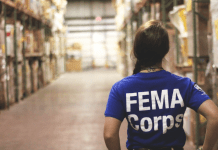Many that have been preppers for a while seem to have a pretty decent food supply. Stockpiling the food seems to be the way most of us continue and we seem to only keep adding to the stockpile. But what about anyone just getting started? Remember how tough it was to get moving when you first started out as a prepper? Worse, were you among those who were struggling to do it on a budget that was shoestring?
The average American family grocery bill works to anywhere between $165 and $345 a month. Yet, that definitely buys more than 2,000 calories a day. Possibly in survival mode we do not need to eat too much. Just eating 2,000 calories a day would mean we eat a lot more than those around us. When we go that way too long, they can start being suspicious.
Related: How To Stockpile Six Months of Food When You Only Have Space for One
What, then, is practical in a situation of survival? We’re going to need calories, just to be able to do the different survival tasks that we need to do. Yet at the same time, our budget must be kept low. It may be good to have fresh bacon and eggs for breakfast and steak for dinner, but that definitely doesn’t sound like a survival diet to me.
Let’s see what we can do, creating a one person starter survival inventory for $200. There would need to be enough food to last one person for two months, including three meals a day. Breaking that down, for the three meals we need, we get $3.33 a day. Not much, doesn’t it?
Since this is survival planning, we should go for a survival diet, focusing on the macronutrients instead of the micronutrients. That means that we roughly want to:
- 65% carbohydrates (for energy)
- 25% fats (for a second boost of energy)
- 10% of proteins (the basic building blocks of life)
In a survival diet I will not rely on your normal variety. To begin with, we’ll have to work with foods that’ll likely be in your inventory. This is a lot of carbohydrates and not a lot of proteins. This means a lot of repetition too. You may find yourself struggling to feel comfortable with a survival diet if you’re the kind of person who lives to eat rather than eat to survive on.
In fact, I’m not giving you two months’ worth of menus here; I’m not even giving you one month’s worth. When you think about it, most of us still eat a rather repetitive diet, cooking the same dishes every week or two. And I’m also going to have a survival diet on that.
Related: 12 Essential Food to Stockpile Before It’s Off the Shelves
Beans and Rice
Everything you do for a survival diet, I would suggest adding in beans and rice on a daily basis. There are plenty of areas in the world where rice and beans are the staples, eaten everyday. The beans have essential protein and they also contain carbohydrates. They are also a cheap addition to your survival diet, with beans costing you about 20 per serving and rice costing you about 11 per serving.
So whether or not I mention it in a specific day’s menu, expect to eat beans and rice with either your lunch or dinner, extend those meals and make your food go further.
Another thing you’ll want to add is bread or other baked goods to your menus. We usually get a decent quantity of our carbohydrates through grains and baked goods. Easy bread is not all that hard to cook like pan bread and is not all that expensive either. For most situations, I don’t mention the bread, because you can add it anywhere you want.
Related: How to Dry Can Beans and Rice for a Shelf Life of 20 + Years
Breakfasts
On a survival menu, breakfast is the best meal of the day. What you are after is carbohydrates and a cup of coffee in the morning to get you started. Luckily most of us are used to eating more or less the same thing for breakfast each morning. And, on a survival diet we can do the same thing. It makes for something like the normal breakfast:
- Oatmeal
- Toast with jelly
- Coffee
To get the toast, of course, you’ll have to bake your own bread, which will cost you around $1.50 a loaf for something better than what you get in the grocery store. One loaf is going to get you through a week of breakfasts and some sandwiches too.
You’ll probably want to add some sugar and cinnamon to the oatmeal, which I have included in the cost.
Sum total for this meal: $0.55
You can swap granola with the oatmeal a few days a week, but it will increase your breakfast cost to $0.80 and you don’t want to do that too much.
Lunches
I’d say lunch, rather than dinner, your big meal of the day. You’ll still be winding down at sundown in survival mode, just as they did in the old days. And the food you eat for dinner is not really going to give you a lot of energy in the way of working the day.
And lunch will be the most expensive meal of the day. More than anything that means that this is the one meal in which we will be adding some meat to the diet.
Meal 1
- Canned chicken
- Packaged Spanish rice
- Beans
Total Cost for this meal: $1.99
Meal 2
- Canned corned beef
- Instant mashed potatoes
- Canned vegetables
Total Cost for this meal: $1.93
Meal 3
- Spaghetti with meat sauce
Total Cost for this meal: $2.43 (enough for two meals)
Meal 4
- Canned tuna
- Toast
- Canned vegetables
- Beans
Total Cost for this meal: $1.77
Meal 5
- Chicken noodle soup – canned chicken pasta, spices, home-dried veggies
Total Cost for this meal: $2.01 (enough for two meals)
Meal 6
- Canned ham
- Yellow rice
- Beans
Total Cost for this meal: $2.20
Meal 7
- Pasta with canned chicken (casserole)
- Canned veggies
Total Cost for this meal: $2.60 (enough for two meals)
Meal 8
- Macaroni & cheese, with Vienna sausages
- Canned fruit
Total Cost for this meal: $1.99
Meal 9
- Fried Spam (the same can be done with Vienna sausages)
- Baked beans
Total Cost for this meal: $2.61
Meal 10
- Canned soup (only buy the chunky ones)
- Dried fruit
Total Cost for this meal: $2.20
Note: Several of the things I mentioned here will offer enough food for two meals. You can either opt to eat those on the same day for lunch and dinner, or save them for the next day.
That means of course providing some way to keep the food cool, if not cold. The colder you’ll be able to hold it, the less bacterial growth. Also make sure to reheat any food you keep in a situation of survival, thereby increasing the core temperature to at least 160°F.
Dinners
Since we’ve eaten our main meal of the day, dinner is something to get us through the evening. These are going to be lower calorie meals, but they can always be augmented as I’ve mentioned earlier.
Meal 1
- Peanut butter & jelly sandwich (you’re already baking your own bread)
- Granola bar
Total Cost for this meal: $0.60
Meal 2
- Ramen soup (add some small pieces of cut-up jerky and dried veggies)
- Crackers
Total Cost for this meal: $1.00
Meal 3
- Beans & Rice
Total Cost for this meal: $0.30
Snacks
Snacks are in fact a luxury, not something that any of us can afford on a budget for survival foods.
Even so, just about every list I’ve ever seen to build a food inventory contains a variety of things that could be known as snacks, such as almonds, dried fruit, and granola bars.
If you have these in your stockpile, use them anyway. Even without taking those into account, this article was written as part of the plan to make food worth two months for $200 or less.
Bear in mind that you don’t want to be maintaining your weight when everyone around you is losing theirs.
It will be a sure sign of getting food, when others don’t, allowing others to come and see what you’ve got.
A Few Final Thoughts
Please bear in mind that this menu was based on very few ingredients and assume that only one person prepared for themselves. In fact, most of us are making preparations for a family. Significantly different. Whereas the cost per meal is going to rise; the cost per serving will go down.
Where I use one small can of chicken as meat for a meal, a larger can would be used for a three to four people meal; the same can be said for several other ingredients.
Including the aforementioned products, I would suggest dehydration of a wide stock of vegetables, specifically carrots, peas, corn, celery, etc. It can be added to the pasta, ramen, and other dishes you make soups. They’re low-cost, lightweight to make and won’t take up a lot of room.
Related: 7 Cheap Foods To Stockpile That People Usually Throw Away
When you grow the vegetables yourself, they would be even lower cost to produce.
The other thing is that probably your survival supply would have far more supplies than I’m displaying here.
This was done using low-cost products from my local grocery store, mostly generic ones. It doesn’t take the bulk storage of food products into account, as other preppers do.
Nor does it contain much in the way of spices and bouillon soup, which I find to be essentials for life.
When you’re going to eat a diet as bland as this, you’re going to want something to add a little more flavor to your meal.
Some of the canned meats I mentioned can be mixed in side-dishes of rice or potato. Probably I would suggest that.
Cooking and washing would not only be faster, but it will also allow for a tastier meal.





















